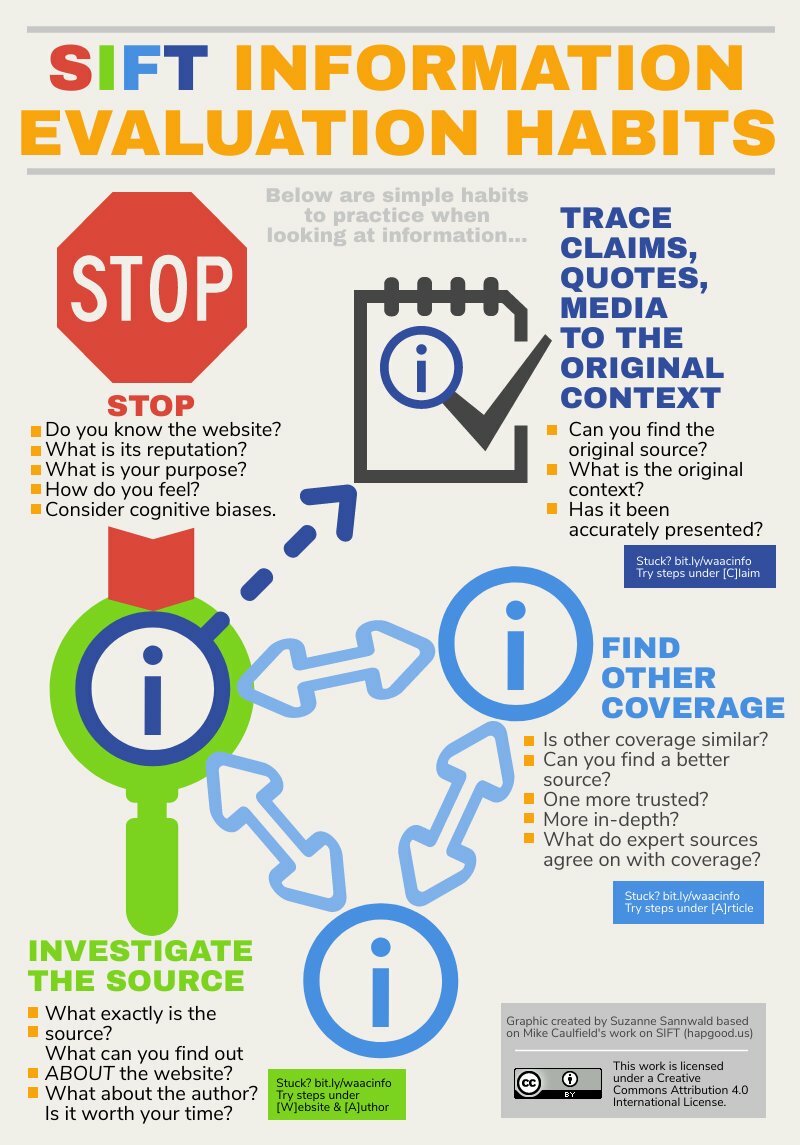SIFT is a series of steps to take when evaluating the reliability of web sites and their claims. It is based on an approach used by professional fact-checkers, and was developed by Mike Caulfield from Washington State University.
Each letter in SIFT stands for one of the steps:

When you see a web site that you are considering using or sharing, stop and ask yourself:
Don't use the source until you have found out more about its content, its creator, and its publisher.
Watch the video below, which highlights the importance of verifying your sources, and then proceed to the next step (Investigate).
The quality of your research is determined by the sources you use. Investigate a source by leaving that web page and looking for information about the source elsewhere. Check several different places before deciding if the source is reliable.
Watch the short video [2:44] below to learn about some of the best ways to investigate a source. Proceed to the next step: Find Better Coverage.
Oftentimes the source of information you come across is not important, even if the claim itself is. What that means is, we can try and find the information we're looking at in other sources. This helps to both verify whether the information is true and to find a better, or more trusted, source of coverage.
"Trusted coverage" can mean:
These can be determined through various online tools, such as the Media Bias Chart or the resources located in the Fact Checking Websites box on the Fake News -- Checking Sources page.
As you work through SIFT more, you can build up a list of trusted sources that can become your "go-to," saving you even more time in searching.
Many times the information we encounter is stripped of its context, which can distort its meaning. It's important to trace claims, quotes, and media back to their original source so that you can understand the context and ensure the information is being presented accurately.

Below are simple habits to practice when looking at information...
Graphic created by Suzanne Sannwald based on Mike Caufield's work on SIFT (hapgood.us)